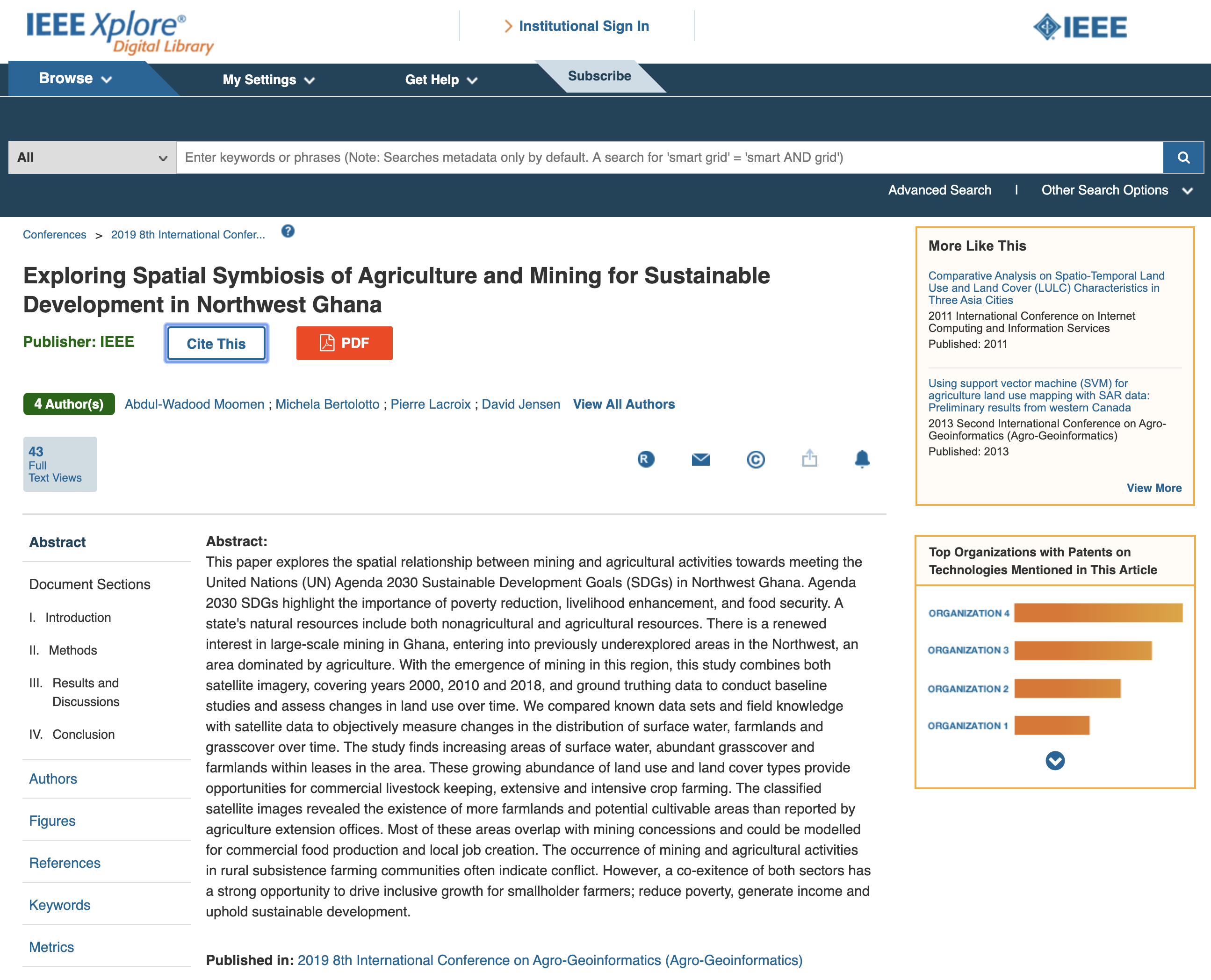Enhancing Sustainable Mining in Northwest Ghana
Development of Time Robust Geospatial Information for sustainable mining in Ghana.
This paper explores the spatial relationship between mining and agricultural activities towards meeting the United Nations (UN) Agenda 2030 Sustainable Development Goals (SDGs) in Northwest Ghana. Agenda 2030 SDGs highlight the importance of poverty reduction, livelihood enhancement, and food security. A state's natural resources include both nonagricultural and agricultural resources. There is a renewed interest in large-scale mining in Ghana, entering into previously underexplored areas in the Northwest, an area dominated by agriculture. With the emergence of mining in this region, this study combines both satellite imagery, covering years 2000, 2010 and 2018, and ground truthing data to conduct baseline studies and assess changes in land use over time. We compared known data sets and field knowledge with satellite data to objectively measure changes in the distribution of surface water, farmlands and grasscover over time. The study finds increasing areas of surface water, abundant grasscover and farmlands within leases in the area. These growing abundance of land use and land cover types provide opportunities for commercial livestock keeping, extensive and intensive crop farming. The classified satellite images revealed the existence of more farmlands and potential cultivable areas than reported by agriculture extension offices. Most of these areas overlap with mining concessions and could be modelled for commercial food production and local job creation. The occurrence of mining and agricultural activities in rural subsistence farming communities often indicate conflict. However, a co-exitence of both sectors has a strong opportunity to drive inclusive growth for smallholder farmers; reduce poverty, generate income and uphold sustainable development.
